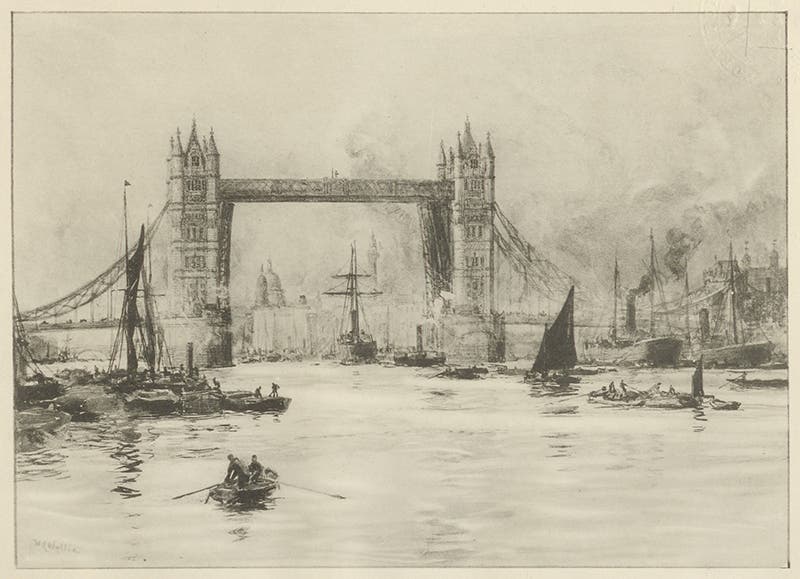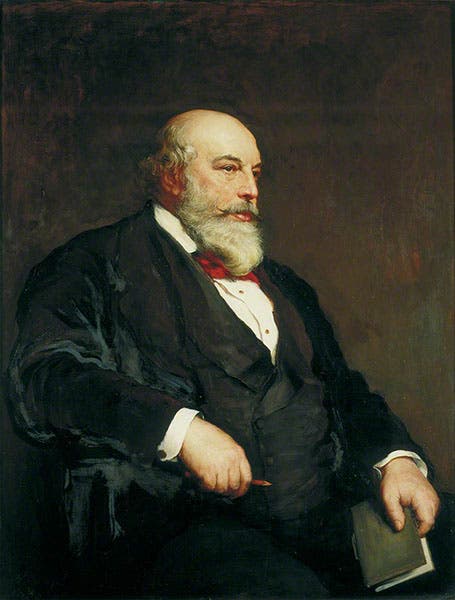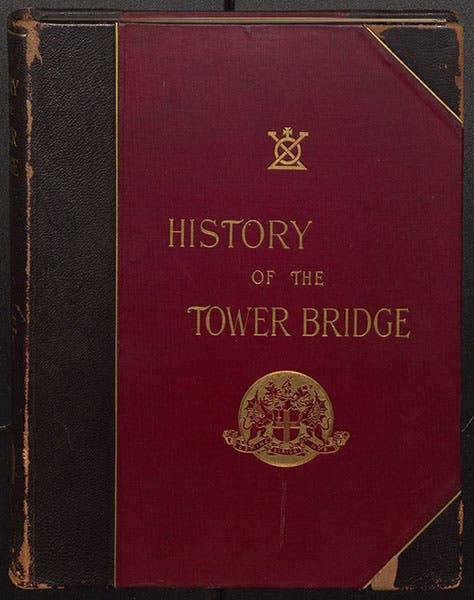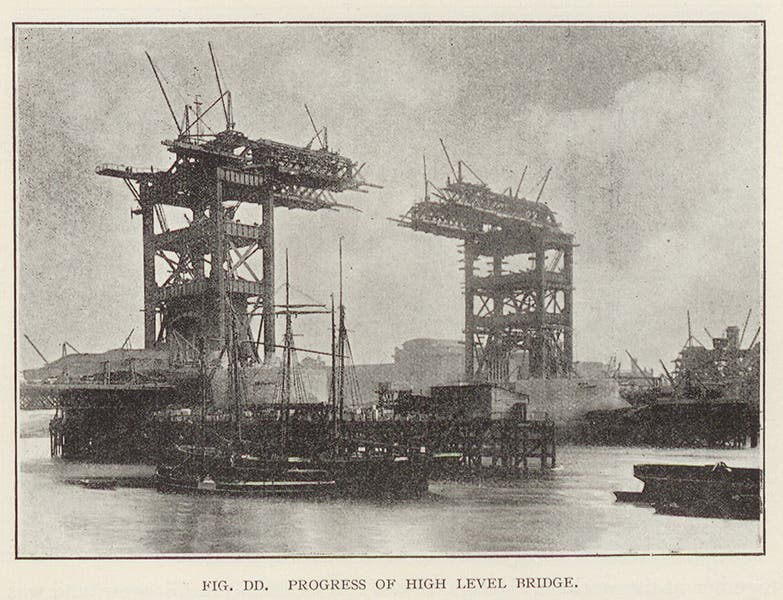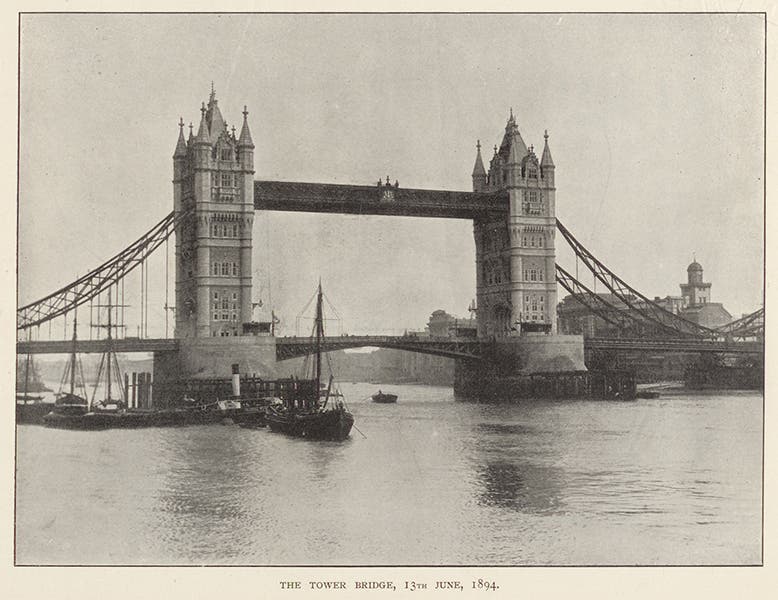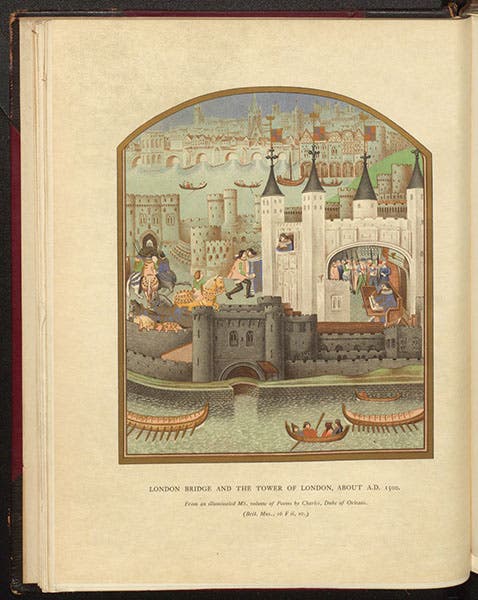Scientist of the Day - Horace Jones
The Tower Bridge in London, one of the most iconic bridges in the world, was opened on June 30, 1894. The bridge was designed by architect Horace Jones, and built by engineer John Wolfe Barry. We discussed Barry's contributions to the building of the bridge in a post on Barry four-and-a-half years ago. We here supplement that essay with a post on Jones, and some additional images.
Horace Jones was born Apr. 20, 1819; in 1864, he became Architect and Surveyor to the City of London, a position he held until his death in 1887. He designed many markets for the city, and several memorials, but his last commission, the Tower Bridge, is by far his most famous. Since Jones died just after construction began, we tend to attribute the bridge to Barry, who designed the bascule bridge in the center, and was in charge of building the rest, after Jones died. It is not known how much of the Tower Bridge came from the mind of Jones, but since he was the bridge architect, presumably he gets credit for the overall design. It was also Jones’ idea to build the bridge of structural steel, and then disguise its iron skeleton with a facing of stone, making it look like a stone structure. This is not truth in architecture, but there is no doubt that most of the bridge’s charm comes from its stone-sheathed towers.
Just after Tower Bridge opened in 1894, a large commemorative folio volume was published by the Bridge House Estates Committee, a body unknown to me, and written by Charles Welch, librarian for the Corporation of London, but otherwise also an unknown figure. The book was called: History of the Tower Bridge, and of Other Bridges over the Thames, Built by the Corporation of London (1894). We have this work in our collections, and most of our images today come from this work. We also used it for our post on Barry, so we have tried to include different illustrations here. The most dramatic images are photographs of the bridge under construction, since here we can see the steel structure as it looked before it was hidden by the stone facing (fifth and sixth images). The book also reproduces, as its frontispiece, a pastel by W.L.Wyllie that commemorated the Tower Bridge opening (first image).
Since the book includes discussion of other historic London Bridges, there are two unusual illustrations of old London Bridge, one an engraving of 1600 by John Norden, and the other a reproduction of an illuminated manuscript in the British Museum, showing London Bridge and the Tower as they looked about 1500 A.D. The manuscript painting is reproduced in color (seventh and eighth images)
Jones’ portrait was painted in 1886, the year before his death, by Walter William Ouless, who a decade earlier had painted a thoughtful Charles Darwin. The Jones portrait is in the Art Gallery of the Guildhall, which Jones had restored in 1866 with a new timber roof, a roof destroyed by German air raids in the second World War.
William B. Ashworth, Jr., Consultant for the History of Science, Linda Hall Library and Associate Professor emeritus, Department of History, University of Missouri-Kansas City. Comments or corrections are welcome; please direct to ashworthw@umkc.edu.


